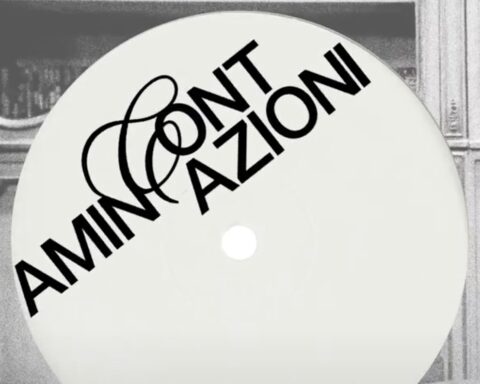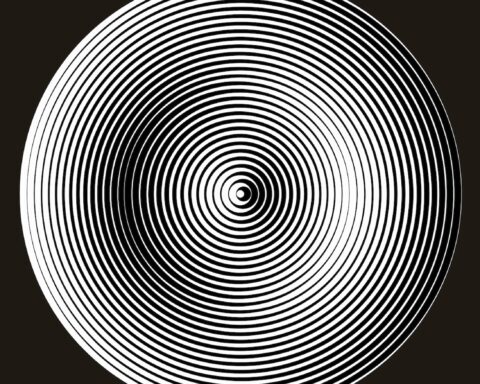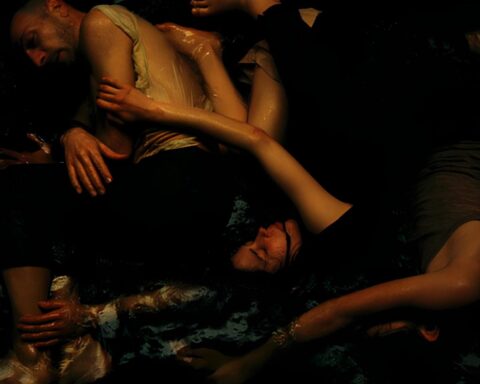The Fondazione Morra Greco is a cultural institution founded in 2003 by dentist Maurizio Greco Morra and exerts a decisive influence on the promotion, development and dissemination of contemporary art. Through the choice of international and local artists, emerging or already established, the Foundation is a catalyst for ideas and interventions that communicate with the Campania region. The Morra Greco collection has been developed since the 1990s and now has more than a thousand works by around two hundred contemporary artists.

The Foundation is based in the fourteenth century Palazzo Caracciolo in Avellino, in the ancient heart of Naples. Its 2,000 metres of exhibition space on five floors, its frescoes and the calico staircase carved entirely from piperno make it one of the most sumptuous European foundations housed in historic settings.
The artists are invited to dialogue with Naples and with the spaces of Palazzo Caracciolo in Avellino. This space, co-inhabited as much by diversity as by an authentic creative spirit, aims at a real cultural regeneration, through educational training workshops and a residency programme promoted by the Foundation. The debate engaged in by the Fondazione Morra Greco encourages encounters and relations with the whole city. Its role of experimentation and research into contemporary art is promoted thanks to the organisation of events and exhibitions in the square in front of the Palazzo, Largo Proprio di Avellino, and the greater usability of the exhibitions is guaranteed by free admission. It opened in 2006 with an exhibition by the artist Gregor Schneider.
The cultural proposal includes exhibitions, workshops, conferences and residential programmes for Italian and foreign artists. The Foundation does not have a director, but is characterised by a team of young and extremely transversal professionals. The current scientific committee is composed of Elena Filipovic, Luigi Fassi, Jörg Heiser, Francesco Manacorda, Heike Munder.
The curators are not permanent and work closely with this multifunctional team. Since 2008, the Region has been an institutional partner, a 50% member of the Board of Directors. It is the first and only example in Italy of a mixed public-private foundation. The frescoes in Palazzo Caracciolo in Avellino are mostly mock architectures treated in monochrome, alternating with curtains that reveal gold decorated grilles, still partially visible. Since 2015, the palace has been undergoing renovation, restoration and re-commissioning work, thanks to a grant obtained from the Campania Region under the 2007-2013 “Attrattori Culturali, Naturali e Turismo” (ERDF) POIn. The conceptual contiguity between interior and exterior is created by a “total” decoration that invests both the walls and the mirrored vaults; at the same time, the completion of the street, the opening of new shops and the restoration of the neighbouring buildings have generated a process of redevelopment of the area. In 2019, the Foundation reopened in its new premises adapted to international exhibition standards; the multidisciplinary approach aims to investigate contemporary art in all its forms and to promote an even stronger link between the artists and the territory. One of the aims is to observe new generations and discover local talent, to move away from ‘end in itself’ works and produce projects that generate interest in relational and site-specific aesthetics.
Through four exhibitions, the Foundation unveils its objectives, with a particular focus on the identity relationship between the individual and the place to which he or she belongs, an investigation that talks about containers and content and how the essence of each is intrinsically linked to the places of origin.
SECOND LIFE by Betty Bee
In the Second Life exhibition Betty Bee wants to tell a story of ascents, decadences and incessant transformations. Her existential journey and the social and emotional dynamics that have distinguished it coincide with her artistic path through performance, video, painting and photography. The multifaceted nature of the artistic mediums chosen for her work bears witness to the kaleidoscopic vision of the world, which the artist transposes into her paintings through the use of fences or beehive structures.
Betty Bee plays with her image, provoking and seducing in a pin-up version, provocative, winking and smiling. While her exuberance is not concealed in the photographs, videos and performances that portray her as a “diva” deprived of her classic “stardom”, her paintings contain elements that aim to protect her inner self. The most vulnerable part of herself is rendered with an aura of mystery that aims to protect her soul and the spectrum of rhizomatic emotions that belong to her.
In the Second Life exhibition, five paintings made in 2013 are presented, with the exception of the only work dating back to 1998, a precursor of her later production. These paintings are emblematic of the artist’s search for a more intimate character. A symptom of a personality rich in nuances, an object of desire and a constant representation of its multiplicity, the use of fluorescent colours refers to a purity filtered through the grids, which stand as instruments of protection. The theatrical element, understood as a symbol of herself, becomes a reference in her artistic-existential journey. The chain, the barbed wire, the net, the honeycomb become synonyms of Maya’s veil, the multiplicity of forms makes the spectator forget the unique essence of things, the deepest side of the artist. While in previous works the individual was subjugated by the bursting, free and untamable femininity, subjected to the disruptive overbearingness of her aesthetics, here the soul becomes the undisputed protagonist. The interiority is fragile, the delicacy and expressive force of the works are a dichotomous representation of the being, exposed in its total purity.
Each of the works occupies a different room on the first floor of the Foundation, in order to make each work observable in its uniqueness. Crosta, 2013 emphasises the multitude of earthly elements, their plurality illuminated by the night trying to be captured by the artist’s gaze that scrutinises their transience. In Loneliness, the ephemeral essence of the leaves bouncing on the net, contrasted by the presence of the rock, a sign of rationality and resilience, become a metaphor for Betty’s desire to place herself in a situation of distance and isolation from a society that exploits and mocks artistic sensitivity. With Life, the artist rediscovers her primal innocence, the emotions that bring her back to childhood, characterised by a joyful and childlike painting, an axiom of freedom. In Couple, 2013, on the other hand, the two flowering branches separated by the lattice personify the incommunicability of love. The impossibility of relating to each other and sharing a single path is a symptom of today’s society, governed (as Zygmunt Bauman would say) by liquid modernity and individualism. In the work Untitled, 1998, renamed La Grande Bellezza (The Great Beauty), a fairy-tale scenario is proposed in which nature goes through its moment of rebirth, in fact the artist herself declares “the world fades away, but the world that leads to nothing, because when there is something beautiful, things finally flourish again”.

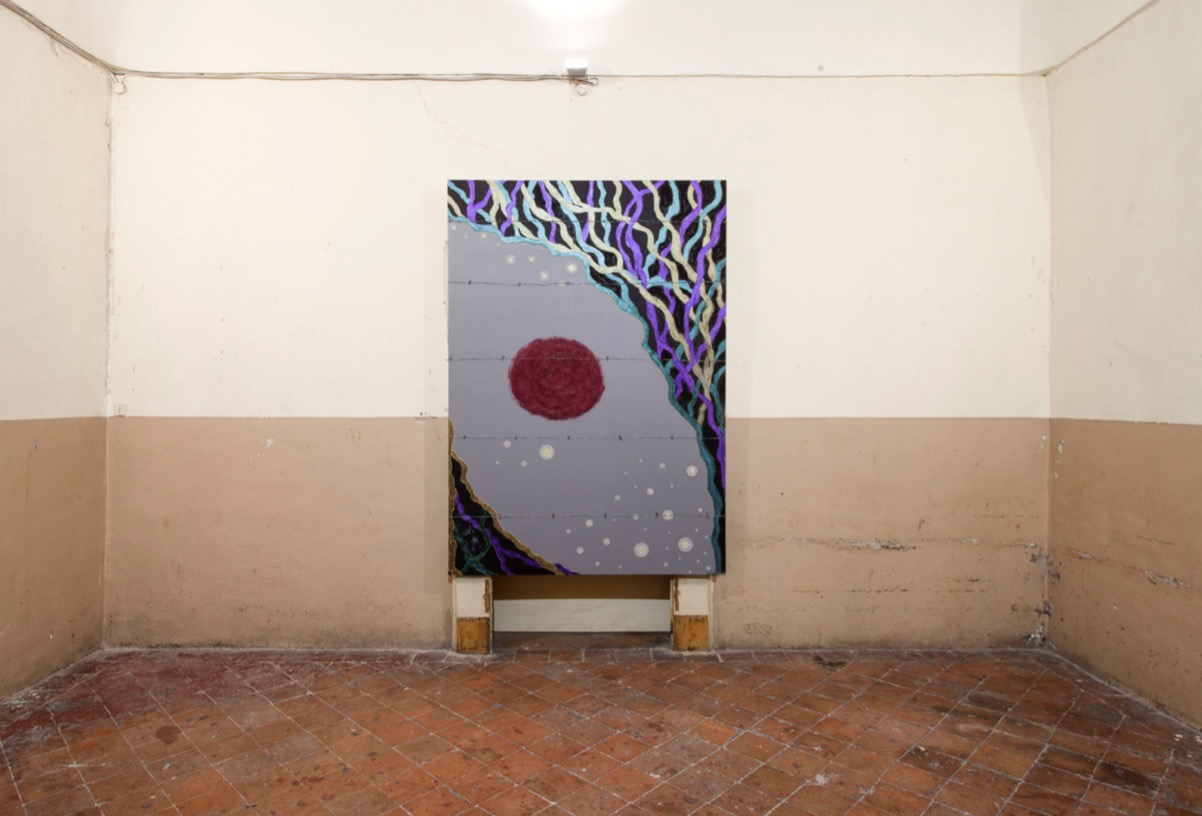

STUDIO FOR PROPOSITIONAL CINEMA
THE STORYTELLERS’ FOUNTAIN: A TALE TOLD BY A GUST OF WIND IN THE LOW AND DARK ROOMS
curated by Alessia Volpe
Like a ‘great glass’, the work of art – even the most difficult – is transparent: to those with eyes to look. Pardon, retinal painting is over. As the production of a thought, it is nothing other than a form of communication of one human being with another. It can even be playfully disassembled and reassembled, intersecting it with our lives, with concrete examples, with trajectories of thought that we are already accustomed to following, or that we could activate with little effort. Thus the exhibition spaces become a great space for reading, through mirrored forms scattered throughout the evocative rooms in the basement of the Fondazione Morra Greco.
Studio for propositional Cinema’s project entitled The storytellers’ fountain: a tale told by a gust of wind in the low and dark rooms, based on Giovan Battista Basile’s Arethusa, is of remarkable aesthetic taste.
What is a mirror for? To fix a tie, a hat, to put on lipstick. The frame, on the other hand, is purely ornamental, useless, inexpressive. The mirror is useful, functional and therefore expressive.
The minimalist installations skilfully follow the architectural lines of the building, dialoguing at a distance with the frescoes on the upper floors and with visitors, who become protagonists of the scene, as in a contemporary Idilio. Mirrors are the key to interpreting this ancient myth, reinterpreted in Baroque poetry.
The myth of Arethusa tells of the river nymph Arethusa who one day, after hunting, bathes in a stream that is actually the river god Alphaeus, who falls in love with her and pursues her against her will. In order to evade capture, Arethusa makes several attempts to escape; firstly she runs away, but is caught by Alphaeus; secondly she hides in a cloud conjured up by her protector Diana, goddess of the hunt, who, due to her sweating as Alphaeus approaches her, turns into water; finally she finds escape through a hole in the ground and escapes from her homeland in Greece, re-emerging as a fountain in Syracuse, Italy.
The stories we tell can be used as prototypes for the worlds we want to build. Mythology has for centuries been an archetype of society, of its inclinations in a subtle balance between reality and imagination, so Arethusa becomes an allegory of a search for freedom, of every form and kind: sexual, colonialist, migratory. Like water, sensually Arethusa digs her way through stone and when she is trapped she creates a new opening.
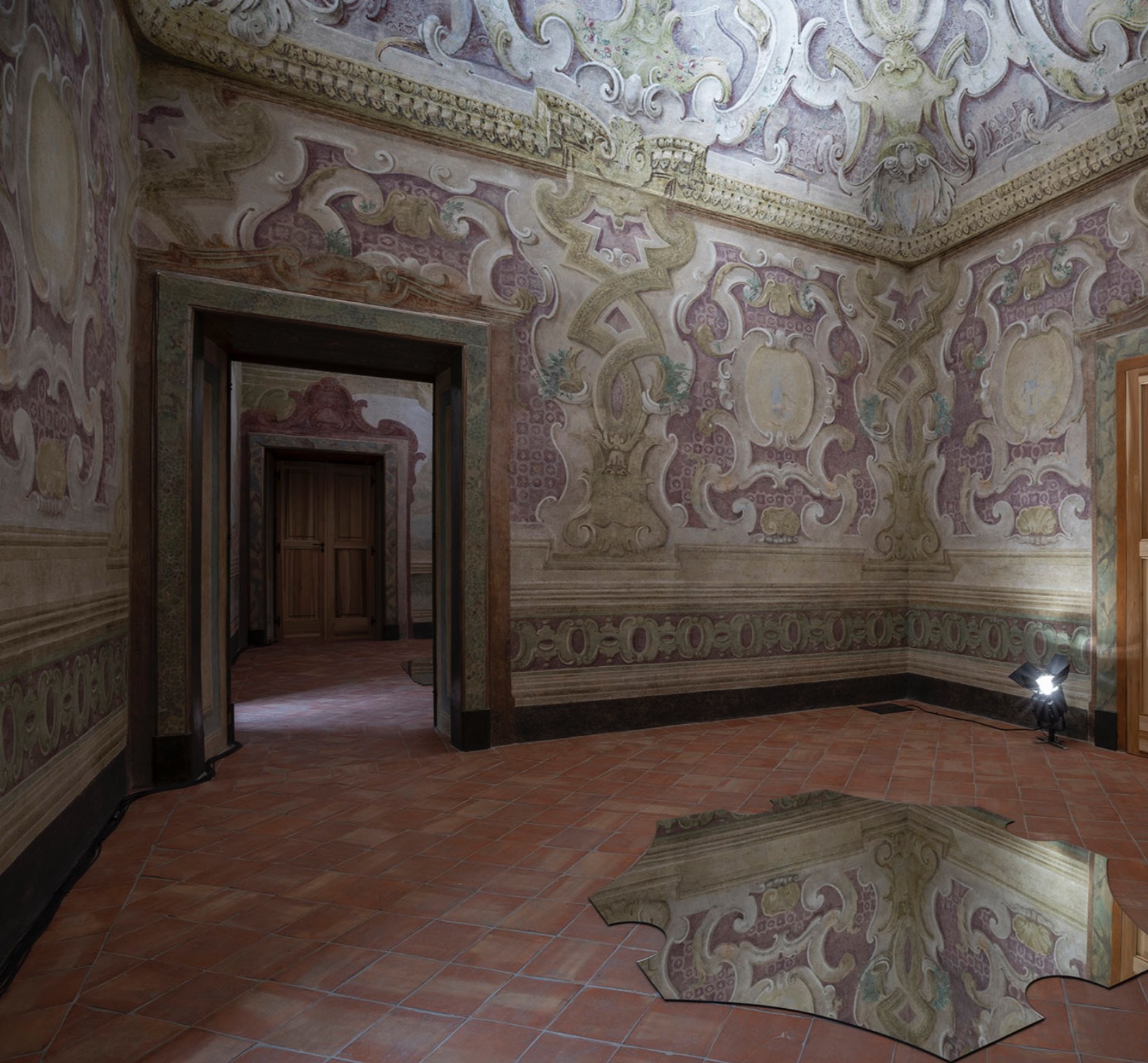

Studio for Propositional Cinema. The Storytellers’ Fountain: a tale told by A Gust of Wind in the low and dark rooms Installation view at Fondazione Morra Greco, Naples Photo Maurizio Esposito Courtesy Fondazione Morra Greco
BLACK MED POMPEII (2021)
by Invernomuto (Simone Bertuzzi, Simone Trabucchi).
The Pompeii Archaeological Park presents the international premiere of Black Med POMPEII Pompeii 2021 by Invernomuto, the artist duo formed by Simone Bertuzzi and Simone Trabucchi.
The artistic project consists of two sound interventions within the area. The first is in the House of the Golden Cupids, called SEASCAPE, which acts as a sonic decoration and is steeped in Egyptological references, in particular the cult of Isis, and the second is between Via Marina and the Forum, which broadcasts the output of the blackmed.invernomuto.info platform six times a day, as if it were a reminder of the passing of time.
The work is part of Invernomuto’s wider ongoing research process entitled Black Med, which is also articulated in a printed publication that expands the project through a series of theoretical contributions (Humboldt Books, Milan) and a programme of performative presentations and listening sessions that have taken place during the project’s work at various institutions.
Black Med POMPEII wants to develop a different perspective on the Mediterranean, to go beyond what we know as the result of the colonisation of certain parts of this sea: the clear distinction between Africa, Europe and Asia. Black Med POMPEII is the last stage of the project awarded by the Italian Council and started 2 years ago. It is a collection of sounds coming from the Mediterranean, referring to the research of Alessandra Di Maio (University of Palermo). It is an installation that spreads a part of the archive that is generated by an algorithm prepared for the occasion. The idea of the Mediterranean that we want to transmit is not a geographical idea, but a wider, protean one. The basic archive does not collect sounds intended exclusively as coming from the basin of this sea, but is an idea of sounds that cross it. To paraphrase Ian Cheng, sound moves without asking permission and leaves important cultural and social traces. The installations celebrate the continuity of heritage, the interconnection between the inherited past that we preserve and the present in which we continue to produce art. Everything seems immersed in an aura of immortality in this ancient city. The impetuous columns observe the passers-by, the drapery of the robe seems to flutter in the wind to ripple like a wave at the bottom. The gutted, naked walls unfold shamelessly in the sun. From the Forum, the eye falls on the motionless work: the triumphant Vesuvius rises silently in the distance. The liquid sound of Eliane Radigue’s “L’Île Re-Sonante” (2000) surrounds you like a wave in the middle of the sea, whose drops try in vain to reach the volcano. Each time you look out between these places suspended in time to let yourself be enraptured by a different timeline.
ALMOST – HOME,
THE ROSA PARKS HOUSE PROJECT
At the Palazzo Reale in Naples, American artist Ryan Mendoza (New York, 1971) reconstructs the home of Rosa Parks, an icon of the struggle for civil rights among African Americans.
The project has been realised with the support of the Campania Region and in collaboration with the Campania Regional Museums Department.
The theme of “Black culture” has been explored in depth by the art world recently, especially thanks to the awareness raised by the “Black Lives Matter” movement. An example of this is the forge of artists formed in Saint-Louis, which has developed a true art of denunciation of racial prejudices and consequently their works aim to place the individual not only in dialogue with himself, but with society as a whole and above all with what is different.
Able to show us the contradictions and guilty omissions of our hedonistic society, artist Ryan Mendoza brings Parks’ house, the woman who symbolised the struggle against racial segregation, back to life, saving it from the destruction that would have awaited it in Detroit. It is Almost Home because the artist would like Parks’ house to one day return to its place of origin, the place where the event took place that caused the great mobilisation of Montgomery’s African-American community.
Drawing on Heideggerian teachings that explain the anthropological impulse to search for one’s own place of belonging and the importance of collective memory that restores meaning to the struggles for emancipation that have taken place throughout history, Mendoza investigates the sacred relationship between a place and its identity. The project is completed by the synaesthetic intervention of the piece produced by Gregg Johnson of Detroit, in association with Underground Resistance and in collaboration with the Neapolitan musician Carlo Fermariello: 8 minutes and 46 seconds to remember George Floyd. A song in honour of all the victims of prejudice, in order not to forget the fragility of human life and how neither 8 minutes nor 77 years are enough to eradicate racial hatred, in fact “le monde est à nous” as the poster of the famous film La haine says, change starts with each one of us.






